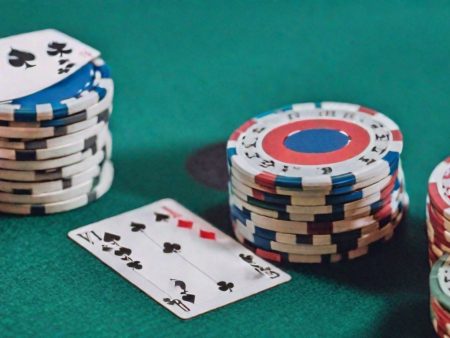Bluffing is one of the most exciting and essential parts of poker. It’s the art of deception, where you make your opponents believe you have a strong hand, even when you don’t. In this guide, we’ll explain what bluffing is, what key points to consider when using it, and how beginners can master this powerful strategic tool.
Mobile Casinos: Play Poker on the Go
More and more players are choosing online casinos that allow them to enjoy games not only on their computers but also on mobile devices. Mobile platforms provide easy access to poker and other gambling games anytime, anywhere. This is the perfect way to enjoy the game while on the go — at work, on vacation, or even while traveling.
However, before diving into real money games, it’s important to understand the fundamentals of poker. Learning key terms and concepts, such as bluffing, will help you make more confident decisions.
When to Bluff: Picking the Right Moment
Successful bluffing requires careful analysis of the situation. Here are several factors that will help you know when it’s the right time to bluff:
- Know Your Opponents. If you notice that your opponents frequently fold or don’t react to aggressive bets, bluffing could be a good move.
- Player Reputation. If you’ve previously played strong hands and been aggressive, your opponents might assume that your next hand is strong as well, even if it isn’t.
- Position at the Table. Being in a later position gives you an advantage since you already know how your opponents have acted, making it easier to choose the right time to bluff.
- Chip Stack. If you have enough chips, you can afford to take a risk and bluff, even if it doesn’t work out.
- Community Cards. The state of the flop, turn, and river can influence the success of your bluff. If the community cards suggest a strong hand, it will strengthen your bluff.
- Instinct and Experience. The more you play, the better you’ll get at sensing the right moment to bluff.
However, remember: bluffing is a risky strategy and shouldn’t be overused. It works best as part of an overall strategy when the situation calls for it. With experience, you’ll learn how to use this tool effectively.
Read also: Betting in poker: how to place bets correctly.
Poker Terms Related to Bluffing
Bluffing in poker has several variations, each requiring a different approach:
- Bluffing. The core term when a player bets or raises, pretending to have a strong hand when they actually don’t.
- Semi-Bluffing. Betting with a hand that could improve on later streets. Even if the bluff fails, you still have a chance to improve your hand.
- Counter-Bluffing. When you respond to an opponent’s bluff with your own bluff to confuse them.
- Bluff-Call. When you call a bet to test if your opponent really has a strong hand.
- Bluff-Raise. Not just betting, but raising to force your opponents to believe in the strength of your hand.
- Showdown Bluff. After a successful bluff, you reveal your cards to show how you tricked your opponents.
- Aggressive Bluff. A strategy where you use high bets and raises to put maximum pressure on your opponents.
- Sneaky Bluff. A subtle form of bluffing where your moves are less obvious, and you try to mislead your opponent into making the wrong decision.
Knowing these terms and using them correctly is key to succeeding in poker. Understanding when and how to apply different types of bluffs will allow you to manipulate the game in your favor.
Read also: Who is a limper in poker.
Mistakes to Avoid When Bluffing
Many players, especially beginners, make mistakes that lead to losses. Here are some of the most common ones:
- Poor Timing. Bluffing for no reason or failing to consider your opponents’ reactions can result in unnecessary losses.
- Excessive Aggression. If your bets are too large, opponents may suspect that you don’t have a strong hand and fold.
- Unconvincing Actions. To make your bluff work, you need to convince your opponents that your hand is strong. Uncertain or inconsistent actions can give you away.
- No Backup Plan. If your bluff fails and your opponents start calling or raising, it’s important to have a backup plan for your next move to avoid significant losses.
- Revealing Weak Hands After a Failed Bluff. If you show weak hands after a failed bluff, it can give your opponents insight into your playstyle.
- Bluffing Too Often. If you bluff too frequently, your opponents will catch on and stop folding.
- Not Analyzing Your Opponents’ Playstyles. Failing to consider how your opponents play and react can lead to unsuccessful bluffs.
To avoid these mistakes, it’s important to develop a solid strategy, consider the context of the game, and improve your skills in reading opponents. With experience, you’ll become a confident player and be able to use bluffing effectively to win. Curious about how professional gamblers play? Visit the blog about gamblers and learn real case studies and strategies!
FAQ: Bluffing in poker from A to Z: a beginner’s guide
What is bluffing in poker?
Bluffing is a strategic move where a player bets or raises with a weak or non-winning hand to make opponents fold stronger hands.
It is a key element of poker that adds psychological depth to the game.
Why is bluffing important in poker?
Bluffing keeps opponents guessing about your true hand strength, making your overall strategy harder to predict.
It allows players to win pots without always having the best hand.
What are the main types of bluffs?
The primary types include pure bluffs, where you bet with no chance of winning if called, and semi-bluffs, where you have potential outs to improve your hand.
Each type serves different purposes depending on the situation.
When is the best time to bluff?
The best times to bluff are when you’re in a late position, against fewer opponents, or when the board doesn’t favor their likely range.
Timing and table dynamics are crucial for successful bluffing.
What are common mistakes beginners make when bluffing?
Beginners often bluff too frequently, choose the wrong spots, or fail to consider their opponents' tendencies.
Over-bluffing or bluffing against calling stations (players who rarely fold) are typical errors.
How can players improve their bluffing skills?
To improve, focus on reading opponents' behaviors, learning to represent credible hands, and choosing optimal situations.
Bluffing success comes from balancing aggression with calculated risks.
Can bluffing work in online poker?
Yes, bluffing is effective in online poker but requires adapting to the lack of physical tells.
Online players rely more on betting patterns, timing, and opponent tendencies to execute bluffs.






